
EUROPA League FINAL, MAY 21 2025
Johnson (42)
Ange Postecoglou backed up his early-season statement that “I always win things in my second year” by guiding Tottenham to the Europa League trophy. His team did just enough to edge past Manchester United in a Bilbao final that was high stakes, but low on quality. In a meeting of two teams desperate for victory to offset their atrocious Premier League campaigns, the result was all important. And while the game itself was further evidence of why they have struggled domestically, it did not matter one bit to Tottenham and their supporters.
Thanks to a scrappy finish from Brennan Johnson – with unintended assistance from Luke Shaw – Spurs walked away with their first European trophy in 41 years. They can now also look forward to Champions League football and a shot at winning the UEFA Super Cup. For United and their manager Ruben Amorim there will be no European football next season, which they will hope is a blessing in disguise for their domestic form.
How the managers saw it
“Big games come down to moments,” said Postecoglou. “You’ve got to limit the moments for the opposition. You’ve got to change your approach. The players embraced that because that was always going to be our approach in Europe. I thought the lads handled it, the whole Europa knockout stages, brilliantly. They knew what we had to do and we were really efficient with what we did.”
“We didn’t perform perfect today, but we were better than the opponent,” said Ruben Amorim. “In the second half, we try everything – with the central defenders, with the players wide, crosses going inside the box. There are some days where I said we were really poor. I think today was not the day.”
Below, our UEFA-licensed coaches have picked out the tactical highlights from what proved to be Tottenham’s night.
 113371723830929221924155233818131697
1133717238309292219241552338181316973/1
SHOTS / ON TARGET
16/5
31%
POSSESSION
69%
12
ATTACKS INTO AREA
35
0.86
EXPECTED GOALS (XG)
1.6
United’s unconvincing shape
Manchester United initially utilised a 3-4-3 structure, but ended up building lop-sided. Left centre-back Shaw received very wide, closely supported by dropping left wing-back Patrick Dorgu, as Mason Mount made runs from the centre to support the wide-left play.
Mount provided a passing option over Tottenham’s onrushing right-back Pedro Porro, who pressed high with Brennan Johnson. Casemiro – as the closest pivot to the build on this side – offered support as Johnson pressed (below), helping United play around the corner. All of which meant that Amorim’s team built with more numbers on their left side, pulling Spurs across.
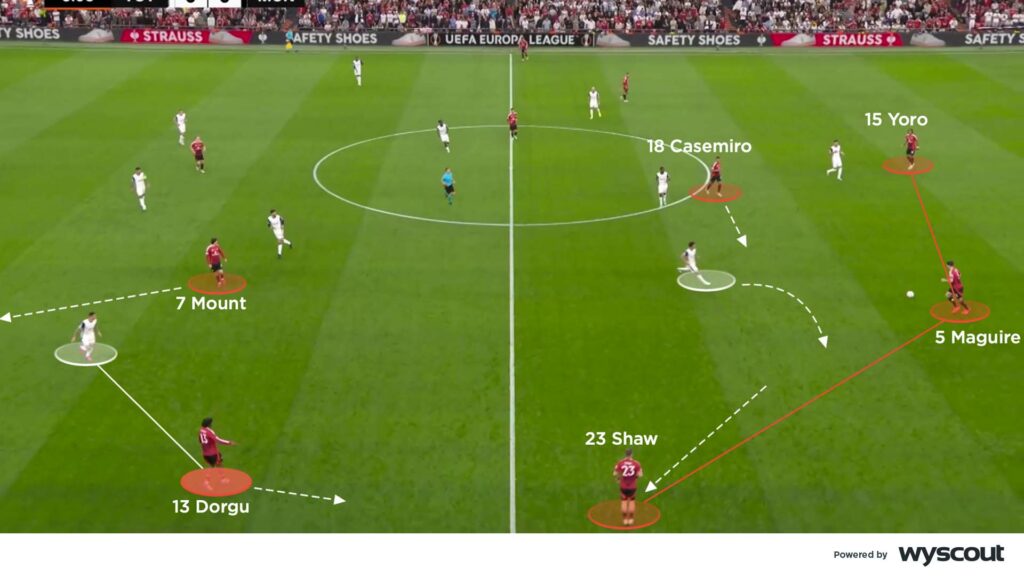
On United’s right side, unlike Mount, Diallo held the width to receive near the touchline. Tottenham’s Richarlison was keen on pressing high, which forced their left-back Destiny Udogie to follow and defend Diallo in larger spaces. There, Diallo could attack 1v1 as United’s strongest threat in the first half. But even when Diallo managed to progress into the final third, United often lacked numbers and quality in and around Tottenham’s penalty area, especially with Bruno Fernandes so deep (below).
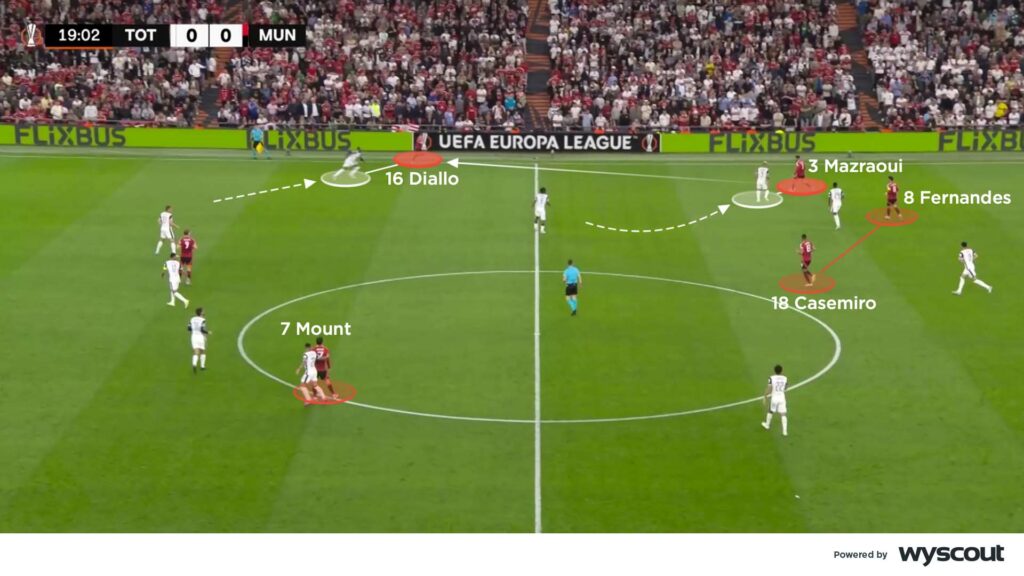
After the break, Diallo spent more time in a narrowed attacking position, similar to Mount on the other side. Casemiro dropped into the back line but also supported the midfield unit, as Fernandes, Mount and Diallo tried to combine and support underneath Rasmus Højlund.
But United’s central play was either sloppy and disconnected, or Tottenham disrupted it with tactical fouling. Shaw and Noussair Mazraoui advanced from deep, almost as traditional full-backs, either side of Harry Maguire and Leny Yoro. Yet Dorgu remained in an awkward position on United’s left (below). And despite continuing to have numbers on their left – and dominating possession – United struggled to penetrate the penalty area with quality.
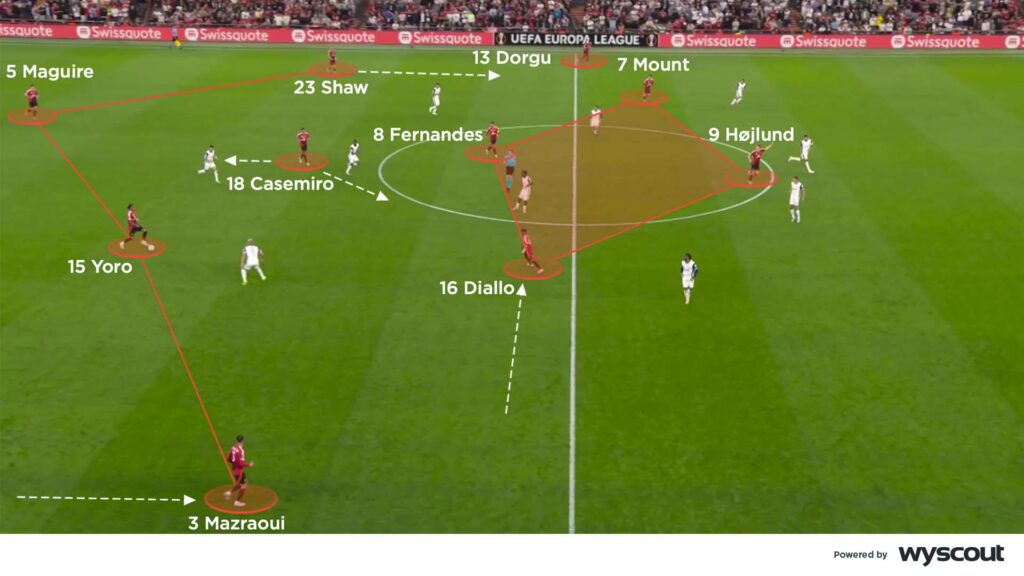
Amorim replaced Mount and Højlund with Joshua Zirkzee and Alejandro Garnacho after 71 minutes. Zirkzee did well to drop in and link with the midfield, pulling a Spurs centre-back out in the process. With this potential to exploit a weakened Tottenham back line, in rare moments United sped up their central attacks to find Garnacho and Diallo running forward (below). Dorgu and Mazraoui provided additional support, helping United to increase their threat – particularly from Garnacho’s side – as time ticked away. But Postecoglou – often derided for a supposed lack of pragmatism – responded to Zirkzee’s growing influence by going to a back five. Tottenham then formed a disciplined and compact low block.
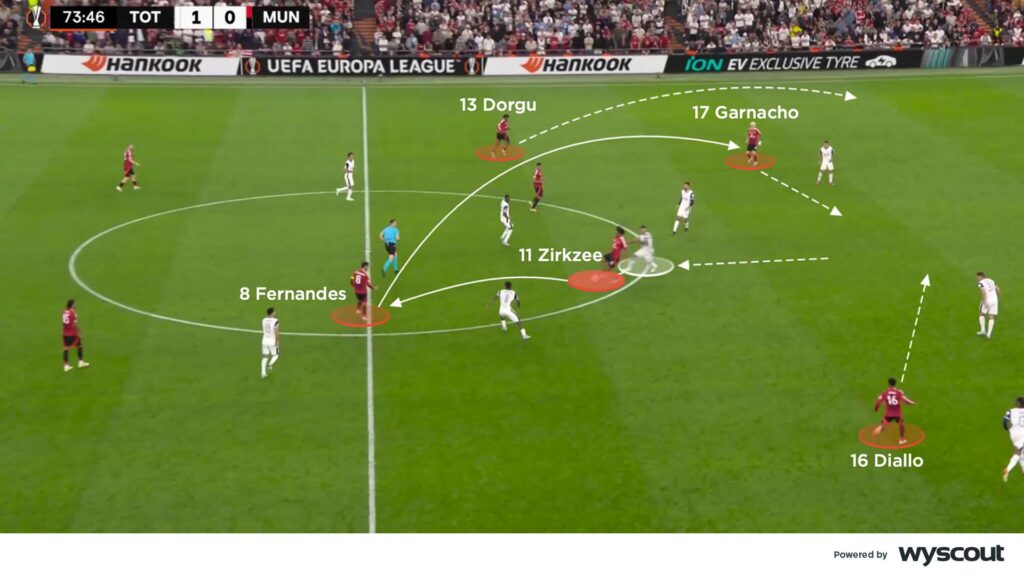
Tottenham’s efficient wide play
Within their 4-3-3 attacking structure, Tottenham’s crossing proved the key to winning the game. Their full-backs and wingers worked well together to provide deliveries, as Spurs built around United’s forward and midfield units. Udogie and Porro provided dangerous crosses, as well as supporting play into Johnson and Richarlison – the latter duo looking to attack United’s wing-back with dribbles. Tottenham’s wingers also attacked crosses with back-post runs between United’s wing-back and far centre-back (below).
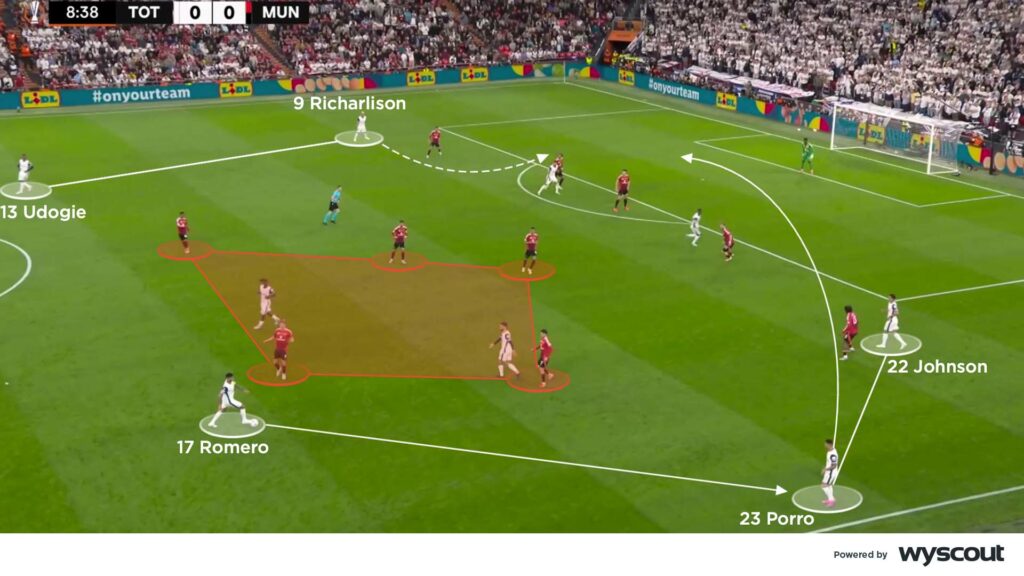
After the opening stages, Diallo and Mount began to press Tottenham’s full-backs from in to out, often locking them towards the touchline. One of United’s wide centre-backs then jumped into midfield to join Fernandes and Casemiro in marking Tottenham’s three midfielders. But Postecoglou’s team continued to play around United’s central presence, getting their wingers in positions where they were able to attack United’s wing-backs 1v1 (below).
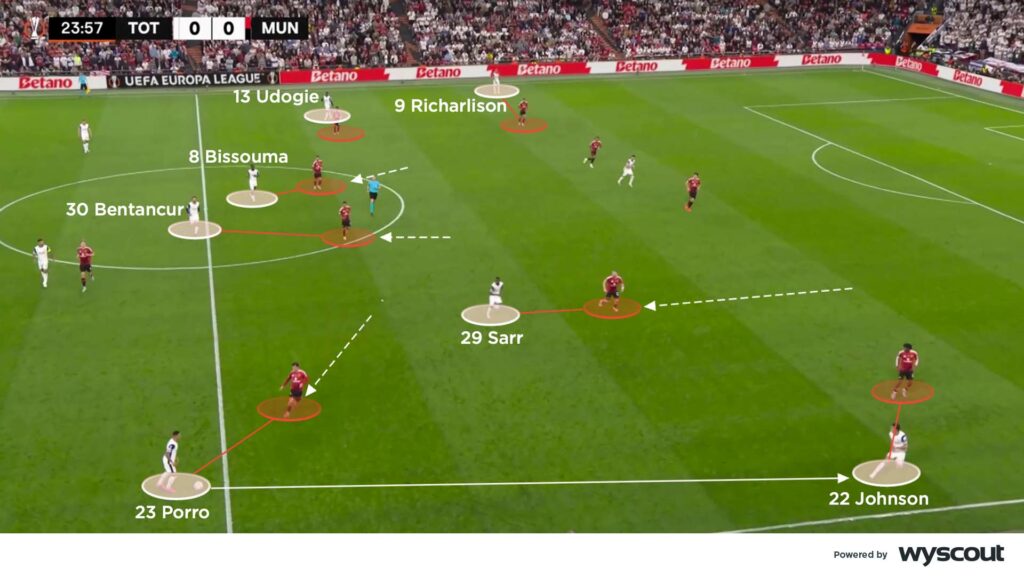
Spurs duly took the lead from a cross – albeit it was midfielder Pape Matar Sarr who made a rare venture wide to provide the delivery. United eventually cut these crosses out at source – often using the touchline as an extra defender to jump straight full-back passes – which nullified Spurs’ main source of attack. Indeed, Postecoglou’s team posed almost no threat in the second half.
As it transpired, they did not need to. Thanks to some resolute defending and a paucity of quality from the opposition, one goal was enough. It was far from a classic, but for Tottenham it was definitely their most memorable game in decades.
To learn more about football tactics and gain insights from coaches at the top of the game – including coaches from Tottenham Hotspur – visit CV Academy



